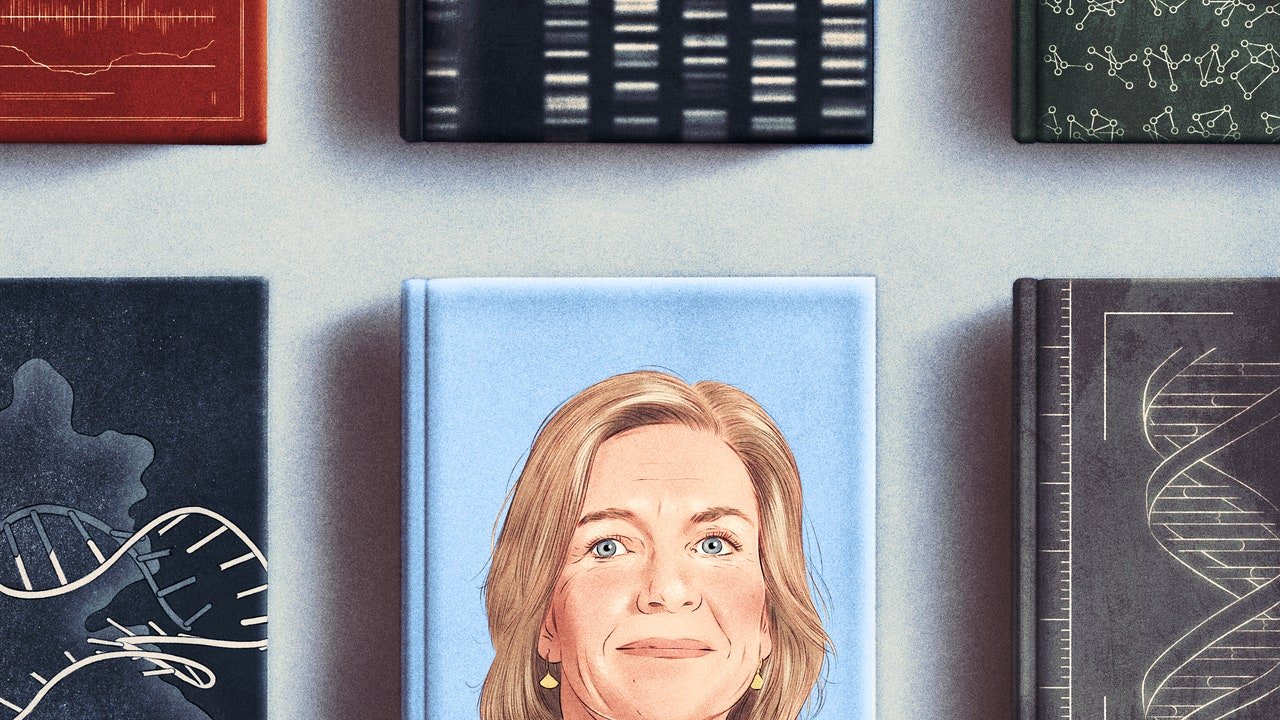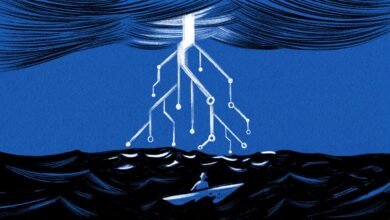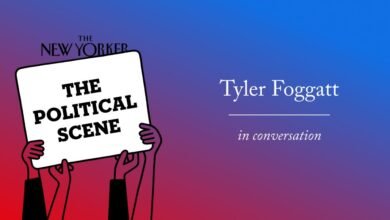
In 2012, the biochemist Jennifer Doudna and her colleague Emmanuelle Charpentier developed a method for using RNA-guided proteins to edit specific sections of DNA. Their innovation—for which the two won the Nobel Prize in Chemistry, in 2020—is known as the CRISPR-Cas9 gene-editing system. CRISPR has since been used to alter plants (to, for instance, produce greater yields), insects (preventing them from carrying certain diseases), and people (to treat sickle-cell disease). The technology’s promise can sound as if derived from science fiction: it might help us adapt to a radically different climate, or grow organs for those in need, or reprogram a cancer patient’s own cells to target tumors. But there are also worries about its possible side effects, both biological and social. A few weeks ago, Doudna, who works at the University of California, Berkeley, talked to us about a few books that she thinks best equip one to understand the promise and potential peril of the gene-editing revolution. Her remarks have been edited and condensed.
CRISPR People
by Henry T. Greely
Hank is the director of the Stanford Center for Law and the Biosciences, and he’s been thinking about CRISPR for a long time. The result is this very thought-provoking book. It’s kind of mind-blowing—CRISPR gives human beings the power to edit the code that makes us who we are, and to make changes which can be inherited by future generations. Hank is great at thinking about it all, both from a lawyer’s perspective and almost from a philosopher’s perspective. He’s very interested in the legal wranglings around who should own CRISPR and who should profit from it. He also gets into the concrete details of a few recent controversies, including the so-called CRISPR babies scandal, in which, in 2018, two children were born after a researcher edited their embryos for immunity to H.I.V. He doesn’t land on a blanket “no” to embryo editing—he wants to make sure that people are armed with the knowledge that they need to draw their own conclusions.
The Code Breaker
by Walter Isaacson
For somebody who is just diving in, I think I would start with this book, which both digs into the science and spends a lot of time grappling with the ethical challenges. One really important thing it gets across is that CRISPR is a technology that came from curiosity-driven research. The first mention of CRISPR systems in a scientific article was in 1987. At the time, there was no indication of what their function would be—a lab just observed their presence in bacteria. But they turned out to be an adaptive immune system that could be harnessed to alter DNA. The story speaks to the serendipity of science and the importance of funding basic research, in which someone makes an observation that initially doesn’t have a connection to anything, and later people come back and realize, Oh, that really means something very different than what we expected.
The book is marketed as a biography of me, and I admit I was very nervous about letting a journalist into my life. When Walter Isaacson first approached me with the idea of writing a book, I kind of laughed. I said to him, “What? You’ve written about all these famous people, and then there’s Jennifer Doudna.” But, during his research, Walter really engaged with all the scientists who are a part of the story. He visited them in their labs and spent time figuring out how we do our work, whether it’s collaboratively or competitively or, sometimes, both.
Editing Humanity
by Kevin Davies
This book, which is by the executive editor of the scientific periodical The CRISPR Journal, is about CRISPR’s impact on the human body. Like Greely, he talks quite a bit about the CRISPR babies, and tries to provide information that allows people to draw their own conclusions—though he certainly has views on what the most impactful applications will be in the near term.
I actually think the first widely distributed applications in society are going to be agricultural products. We already have tomatoes coming to market that are more nutritious; there are tests going on with drought-resistant rice and soybeans. I think we’ll see increasing approvals of CRISPR medical therapies in the next five to ten years. Right now, there are two main kinds of obstacles to wide access. The first set of obstacles is basically financial: it’s extremely expensive to generate the materials that we need to run a clinical trial, for example, and it shouldn’t be. Then there are the technical obstacles. A big barrier is the way that the gene-editing molecules are currently used. The sickle-cell therapy that was recently approved, for example, requires cells to be extracted from patients’ bone marrow, edited in the lab, and then infused back into each patient. It requires hospitalization, is incredibly invasive and uncomfortable, and the cost is very high. I see a future where that’s completely upended by technologies for introducing CRISPR gene editors directly into the body, in ways that allow them to precisely and effectively target the cells that need editing without bothering all the other cells. That technology is coming—probably, again, I think we’re within five years of seeing that come online, which is very, very exciting. We’re working on it, many others are working on it.
Bonus picks: “The Gene,” by Siddhartha Mukherjee; “Breaking Through,” by Katalin Karikó; and “The Worlds I See,” by Fei-Fei Li
Sid Mukherjee is a hematologist, oncologist, and professor of medicine at Columbia, and his book discusses how genes make us, and how hard it is, even now, to define what a gene is. The question matters for CRISPR because, of course, CRISPR is a technology that involves editing genes, and so we sort of have to know what types of molecules count if we want to use the tool effectively.
Katalin Karikó was the winner of last year’s Nobel Prize in Medicine, for her work developing mRNA vaccine technology with Drew Weissman.
“The Worlds I See” focusses on A.I. and is by Fei-Fei Li, a professor at Stanford University who has contributed some of the field’s most important research. Fei-Fei and I have done a number of things together, mostly in the form of trying to educate students about breakthrough technologies, since both of us face challenges arising from their ethical implications. These last two books, although they’re not about CRISPR, are important because they’re about technologies that are absolutely going to intersect with it in the future in ways that will be transformative.
Source link










